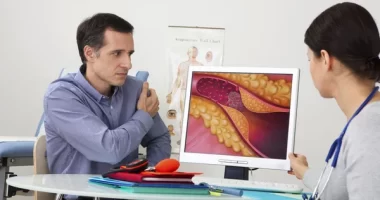Ingrown hairs are a real pain to remove, and although the problem normally resolves itself, you might want to nip it in the bud. We chatted to Baldeep Farmah, Medical Director, Dr Aesthetica www.draesthetica.co.uk to find out everything you need to know about ingrown hairs, including how to remove them.
Although most of our body hair grows up and outwards through our skin, an occasional rogue hair may curl under the skin or sideways into the hair follicle – this is an ingrown hair.
Baldeep said: “Ingrown hairs present as a dark or red bump.
“Often, you can actually see the hair itself lying just underneath the skin.”
If you regularly get ingrown hairs you probably have thick, curly or coarse hair, or it might just occur with your beard, pubic hair or underarm hair.
Baldeep added: “Harsh shaving is the number one culprit of producing ingrown hair by creating a sharp tip on the end.
“If shaved, plucked or waxed incorrectly, or even if constantly subjected to friction such as rubbing against clothing, an individual or a small number of hairs may form sensitive raised bumps which may then go on to fill with pus.
“This is a sign that the body is reacting to the hair as if it were a foreign body.”
Sometimes however, ingrown hairs are just hair follicles that have naturally become clogged with dead skin or dirt.
How to remove an ingrown hair
Ingrown hairs shouldn’t typically be removed because your body will take care of the problem.
However, the problem only resolves itself if you avoid causing any further friction to the area, as the hair naturally begins to grow again into and through the follicle.
Baldeep added: “At this point you can often open the pore using a warm face cloth and manipulate the hair.”
Once you’ve opened up the pore, you can start encouraging the hair to uncurl by straightening it out into the direction it is supposed to grow.
Baldeep said: “Do not be tempted to pluck it out as this will continue to repeat the problem.
“Simply leave the area alone and allow the hair to grow as usual.”
Once you’ve removed the hair, you’ll need to keep it scrupulously clean to avoid infection and use a very gentle exfoliation solution to minimise skin debris.
Baldeep warned: “If the problem keeps reoccurring, you could try a medicated cream from your GP or use over-the-counter products, such as tea tree oil or salicylic acid, to keep your pores as clean as possible and prevent ingrown hairs from forming.
“From a skin therapy perspective, pulse light therapy can work by preventing infection and resulting scarring, and laser hair removal is ideal for removing ingrown hair and reduces ingrown hair issues long term.”
Post source Daily Express








